Insurgency: Sandstorm Review
Going loud
Chances are, if you have played a multiplayer FPS in the last decade, you have played a game that at a glance seems almost indistinguishable from Insurgency: Sandstorm. Soldiers in desert camo fighting head-wrapped insurgents in a dusty Middle Eastern setting is a difficult prospect to get excited about after we have seen such conflicts done so many times before. However, if you played any of New World Interactive’s previous games, you would know that looks can be deceiving, as their particular style of hardcore shooter combines realistic weapon mechanics and bullet damage with focused urban maps and an emphasis on close quarters combat rarely seen in the genre. Sandstorm continues this legacy, with significant improvements to audio-visual presentation and various tweaks and enhancements to gameplay making it their most fully realized interpretation of a modern conflict yet, despite the familiarity of the subject matter a few technical wrinkles that could use ironing out.
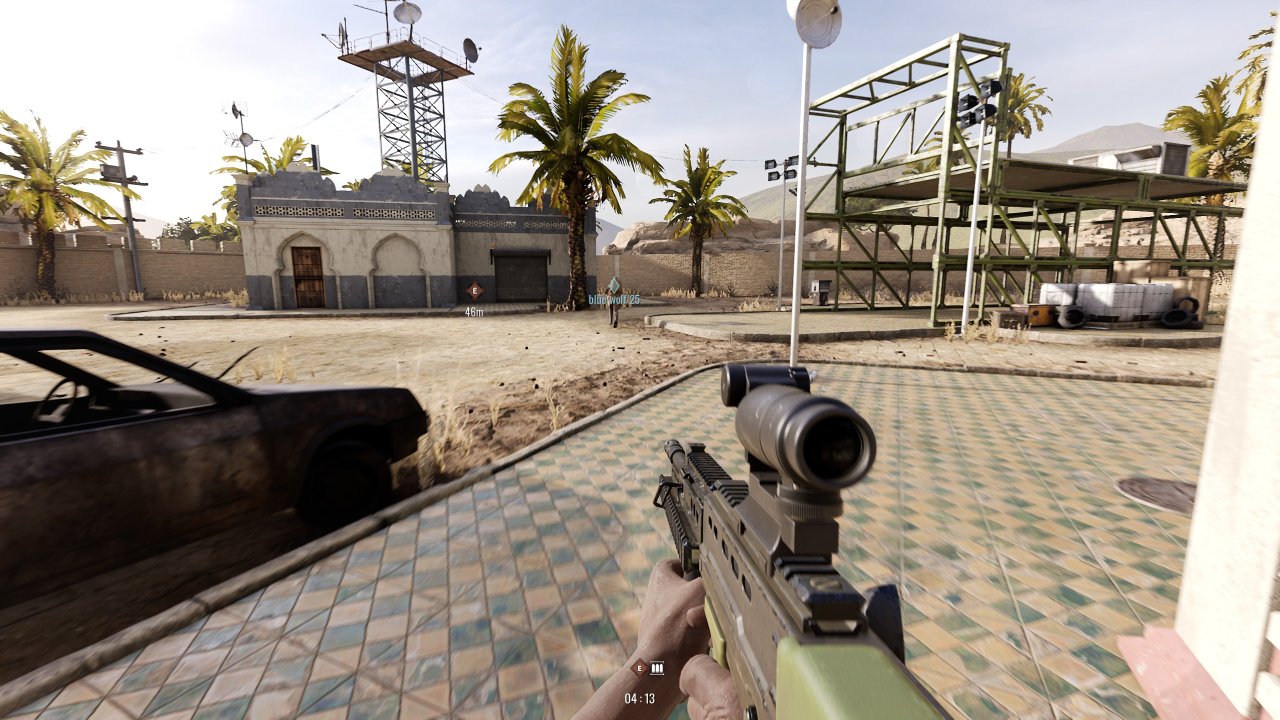
If you played either the first Insurgency or the World War 2-themed follow-up Day of Infamy, you will have a pretty good idea of what you are getting yourself into with Sandstorm. You can play co-operatively against bots, or against other players, in a variety of objective-based modes that all return from previous games. The focus is once again squarely on multiplayer; there is a well done tutorial mission, and you can play offline, but the modified version of the co-operative Checkpoint mode doesn’t work as well solo as you can’t coordinate with your AI team about what doors to cover while defending, etc., which makes success in solo missions almost impossible.
Playing with others against the AI proves to be a much more enjoyable experience, and not only does this mode make for a great way to learn the maps and weapons, it might be where the most consistent fun and intense action is to be had with Sandstorm. The Checkpoint mode sees you and up to seven teammates working your way through each level, capturing control points and destroying weapons and ammo caches defended by AI soldiers. After you capture a control point, there is a random chance of an enemy counter-attack. Spawns are limited, such that you only respawn when an objective is completed. Being the last member of your team alive, with your entire team spectating as you try and complete the next objective so they can respawn, is fantastically tense and very rewarding if you manage to pull it off; if your entire team perishes, the round will end.
One of the biggest things that helps the co-op feel like a main attraction rather than a distraction from PvP is the improved enemy AI. They generally stay on the move and have a habit of appearing in unexpected places, and won’t hesitate to throw grenades or even fire RPGs at players, which makes playing against them challenging and unpredictable. Unique to co-op are insurgent suicide bombers who will charge into objectives with the beeping of a cell phone signalling the oncoming blast. Another new mechanic in Sandstorm is the presence of driveable pickup trucks with mounted machine guns on the back. The AI will use these to great effect, moving the trucks and positioning them in different places to try and suppress players, with bullet penetration allowing the high-caliber machine gun rounds to go through seemingly solid walls, making it so you almost never feel safe.
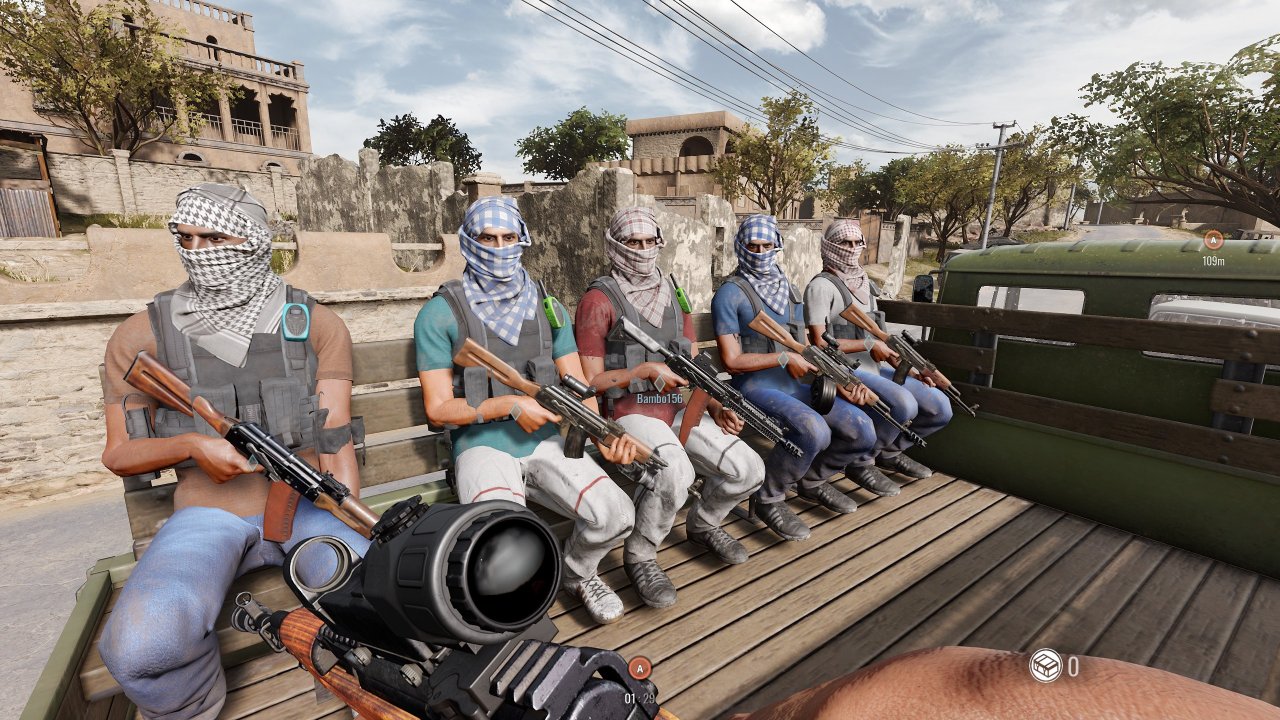
Though generally intelligent, the AI isn’t perfect, mainly due to inconsistency in how good their aim is. Sometimes you can walk into a room full of enemies and all of them will somehow miss every shot as you frantically gun them down, but other times you will round a corner and instantly get blasted in the face by a single AI soldier with a shotgun. It is also a bit of a shame that there isn’t an option for AI difficulty; it might be too difficult for some players, and too easy for others, though it does at least seem reasonable. It's also worth noting that there are fewer co-op modes compared to previous games from New World Interactive; I missed the defensive ‘Holdout’ mode from Day of Infamy in particular.
If you prefer to face off against human opponents, there are three regular modes and a ranked 5v5 variation on one of them. Skirmish is probably the mode most players will gravitate towards, as both teams fight to control several control points while defending their weapon cache. This mode allows both teams to respawn a limited number of times with respawn waves, with additional waves being earned each time an objective is captured. Push sees one team trying to capture a series of control points while the other team defends. This mode currently seems to favor the defenders a bit too heavily as the attackers only have a handful of reinforcement waves to capture the first objective, which will grant additional waves. In my experience if the attacking team didn’t immediately break through and capture the first point (which they rarely did), the defenders would dig in and the round would be over in a few minutes.
The final mode, Firefight, is the most hardcore. In this mode, there are fewer players on each team (8v8 instead of 16v16), and players can only respawn if their team captures an objective. Both teams start with one control point and must fight to capture a third that is generally in the middle of the map. The limited respawns make this the slowest paced and most tense mode as players carefully try to outmaneuver each other and stay alive. The competitive ranked playlist uses a variation of this mode, with teams of five making things even more tense.
One surprising area of regression is how matchmaking and loading into new matches is handled. You can matchmake by yourself or with a party, or use the server browser to join games, which is all good and well. However, at the end of a match, you get booted out of the server with your party and automatically start searching for a new one. Sometimes you will end up on the same team, but other times you will end up in a completely different server. This is not as good as the old system, where you would stay in the same server and vote for the next map/mode. With the new system you might get matched into an in-progress game, or into the same map you just played. This isn’t a big deal since the matchmaking works so well, but it is a bit puzzling.
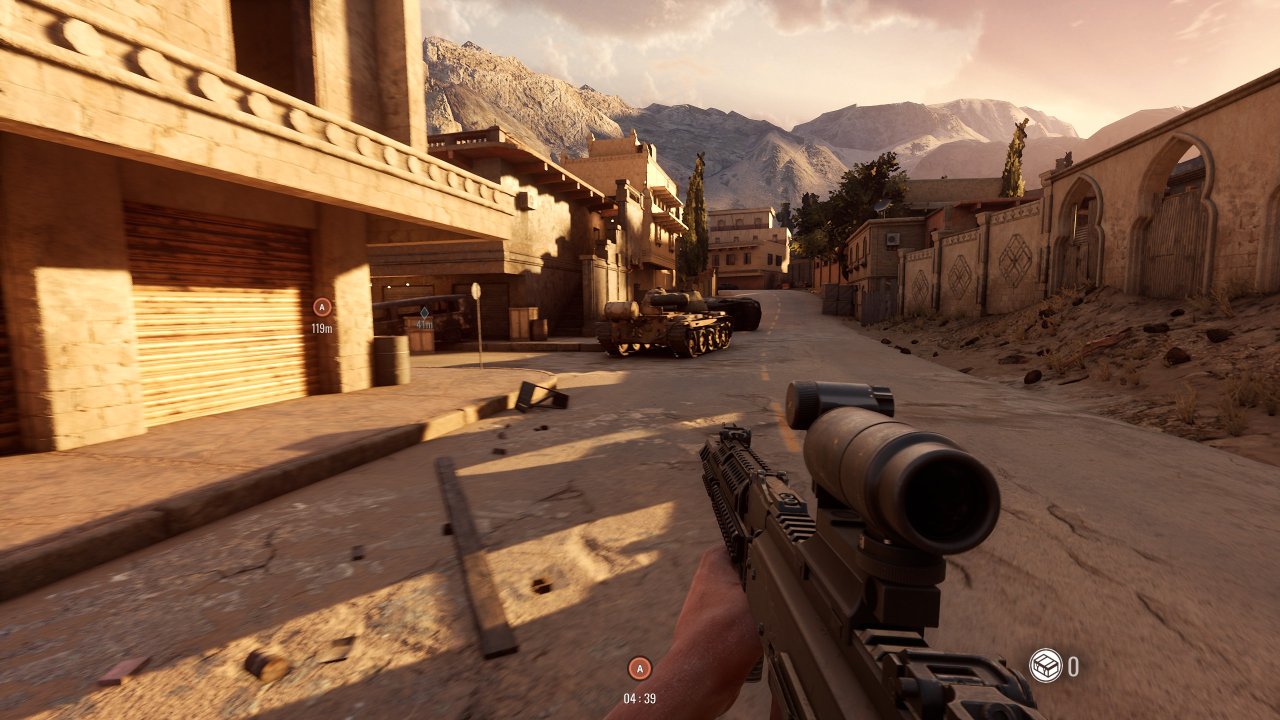
Currently, there are six maps in the game, with all modes being available on all maps. Though this might seem like a pretty small number compared to previous games, they are on average a bit bigger and more complex. Most of them take place in urban settings, with plenty of interconnected buildings allowing for lots of opportunities to flank or hide in an unexpected locations. The Middle Eastern environments aren’t terribly exciting but there is a decent mix of industrial settings, large cities and smaller villages. New maps are promised for free in the future.
Regardless of the map or mode, the team and class structure will be pretty much the same, and hasn’t really seen any changes from Day of Infamy. Central to the team are the commander and observer roles; combined, they can call in fire support in the form of smoke or artillery barrages, support helicopters, and even a strafing run a fighter plane. Effective use of fire support call-ins can turn a seemingly impossible situation into a manageable one. Other classes are divided up based on their weaponry such as the Breacher who has access to sub-machine guns and shotguns, the Gunner who uses heavier machine guns, with the basic Rifleman class having access to a wide range of assault rifles and throwable items like grenades.
This system continues to work well, with limited slots for each class except for Rifleman ensuring a good variety of weaponry will be present in most matches. The number of different weapons and attachments already present is impressive, and more will supposedly be added post-launch again for free. One mechanic that feels a bit poorly defined is the presence of a weight meter, with lighter loadouts supposedly affecting movement speed, though I can’t say I noticed much difference between when I was running around with lighter equipment or loaded down with a machine gun and heavy body armor.
New World Interactive’s previous games ran on the Source engine, which gave them a certain feel when it came to aiming and movement. With the move to Unreal Engine 4, the mechanics feel just slightly weightier, with a bit more of a sense that you are controlling a soldier with a body that takes a bit of time to respond to input. That isn’t to say the game feels unresponsive, but the pace of action is slightly more deliberate compared to the previous games, and you will need to exercise a bit of extra caution when moving around since you might not be able to respond to threats quite as quickly.
Otherwise, the core gameplay experience is fairly similar to the original Insurgency, with a few welcome tweaks and enhancements. Perhaps the biggest is the inclusion of mantling, which lets you hop over windows and low walls, a seemingly basic mechanic that was previously absent, and it improves the flow of movement. The game has a staged reload system, so you can switch to your secondary gun part way through a reload animation, then switch back to your primary and continue the reload instead of starting over. If you have a partially full magazine, you can choose to ditch the remaining bullets for a faster reload, or stow the rest of the magazine for later use which makes for a slightly longer reload animation. You can hold the reload button at any time to get a rough idea of how much is left in your magazine, but you won’t get a specific ammo count.
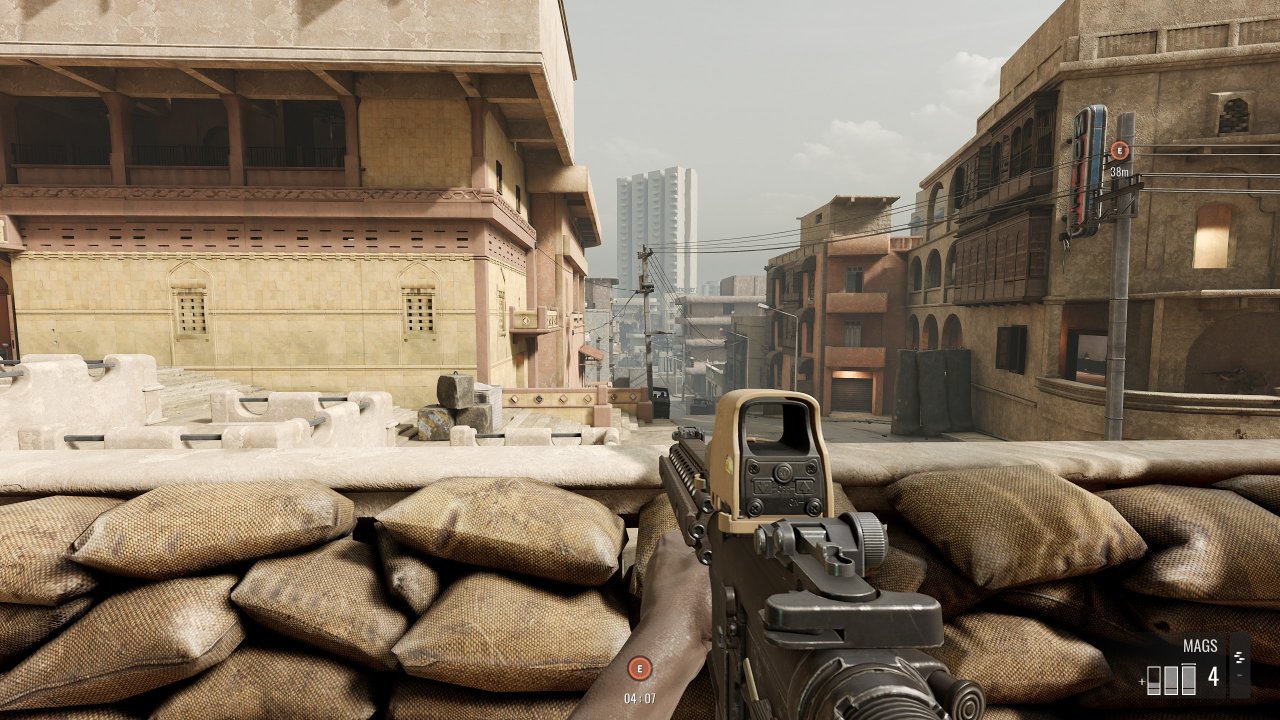
The result of the above is that ammo management and deciding when to reload, when to switch to a sidearm, and even what type of reload you perform become quite significant and can make the difference between life and death. Performing a full reload that includes stowing your current magazine can feel excruciatingly slow when enemies are nearby. Hearing the *click* sound when you try and fire your gun with an empty magazine is a source of intense panic and a brutal reminder that you lost track of how full your magazine is.
Unsurprisingly, the other main side effect of the switch to a new engine is the drastic improvement in visual fidelity. The quality of textures and lighting are vast improvements over the old Source-engine powered environments, which were decidedly dated. Character models are improved, though not quite to the same extent, and there are some bugs with hand and weapon models not loading in right away, and some animation bugs that will see soldiers skating across the ground without moving their legs. Unsurprisingly, Sandstorm also doesn’t run as well as the older games; I was able to get good frame rates, but occasional stuttering can bring you out of the experience, and some maps are less optimized than others. The performance issues aren’t game breaking, but they do represent a regression from previous games.
One aspect where New World Interactive have always excelled is sound design, and they have really outdone themselves here. Insurgency: Sandstorm could stand toe to toe against the best of the best when it comes to audio in military shooters, and would probably even come out ahead in many areas. Gunfire and explosions are richly detailed and absolutely deafening, while sonic cracks from bullets whizzing by will make you want to hide under your desk. The audio ratchets up the intensity of firefights up to levels seen in very few games. Loud explosions will temporarily drown out all other sound before it gradually returns. During quieter moments, excellent directional audio makes it easy to determine the location of nearby footsteps or distant gunfire. The original soundtrack of Middle Eastern acoustic instruments is used sparsely but works well when it is present.
Soldiers, both player and AI controlled, will automatically communicate about when they are reloading, on an objective, suppressing enemies, or taking fire, and the voice acting is very well done. Sometimes during a hail of bullets your soldier will just start screaming curse words, which is appropriate since you might find yourself doing the same thing out of sheer surprise and terror. Unfortunately, there are some audio bugs as well. The worst is one that causes weapon audio to break so you won’t hear your own weapon firing, or reload sounds, which I experienced multiple times, and friends I play with reported the same.
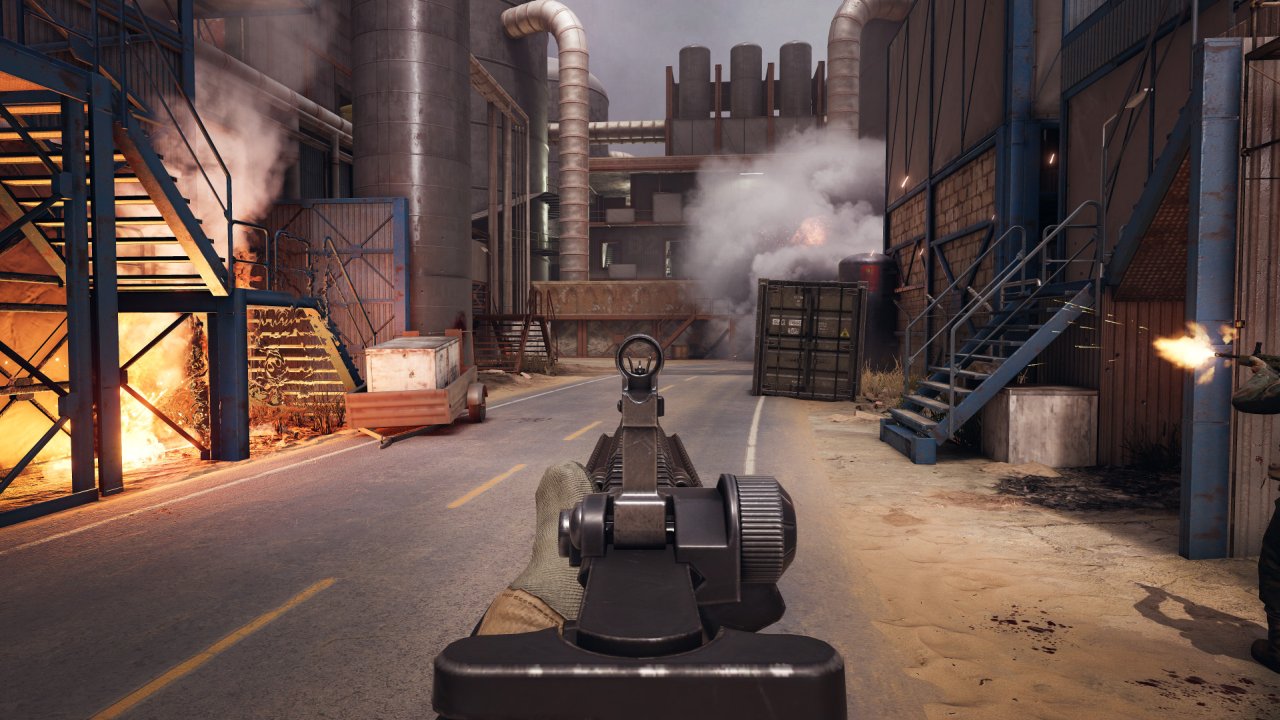
As far as sequels go, Insurgency: Sandstorm feels like a pretty safe one, with a much needed update to the underlying game engine and some modest but welcome gameplay enhancements more or less representing the sum of improvements. Though it is a bit disappointing that the originally planned single player campaign didn’t make it into the final product, and that the current roster of maps and modes feels a bit limited compared to previous NWI titles, what is here is generally very solid and should be enough to please series veterans, and more free content is supposedly on the way. If you are looking for a good multiplayer-centric tactical shooter, or you are someone who can appreciate incredible audio in games, Sandstorm is definitely worth a look.
 Comments
Comments
















